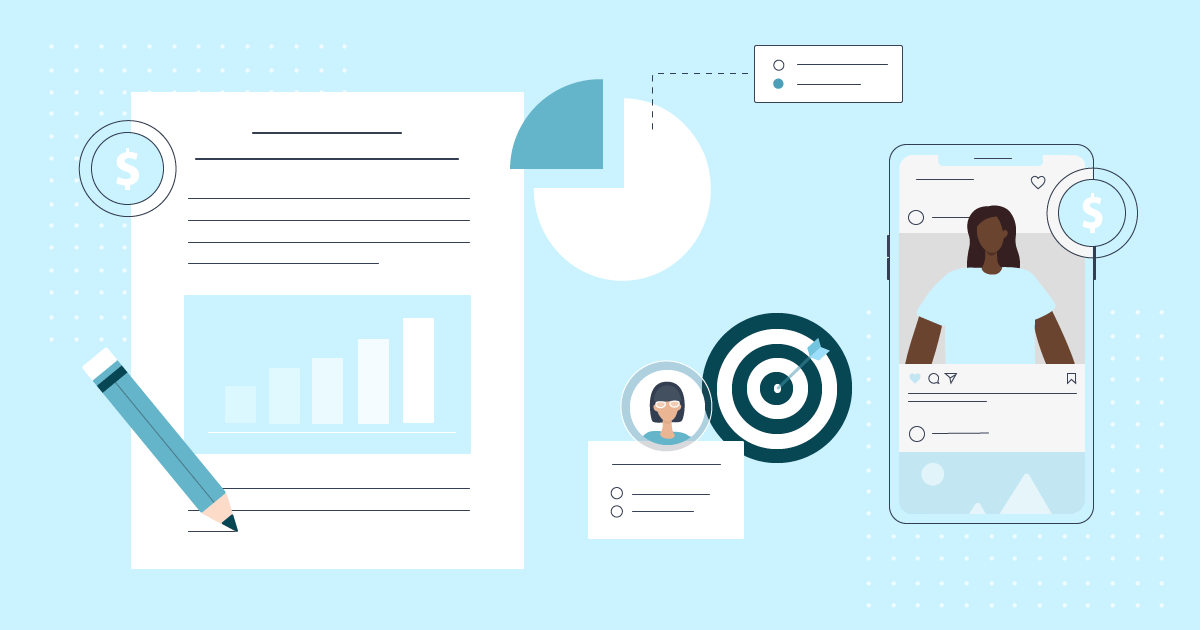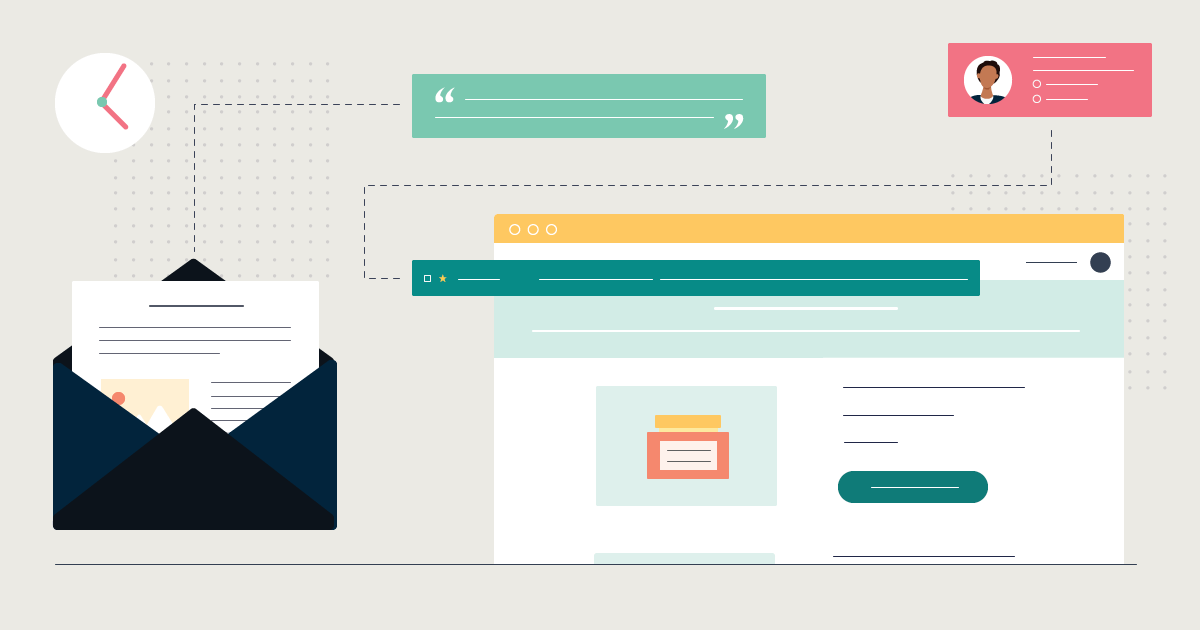
How to Create Buyer Personas: The Complete Guide [+Examples]
The reason why some brands are more successful than others is because of buyer personas. While often neglected by some businesses, buyer personas can prove to be an invaluable tool to target your customers more effectively.
A deep understanding of your buyer personas will enable your business (from marketing to sales and support) to be aligned and attract high-value leads and customers that will be easier to retain over time.
In this blog post, you’ll find a complete guide on:
- what buyer personas are
- why they are so important for a business, and
- how to create one in 4 easy steps
So, without further ado, let’s get to it!
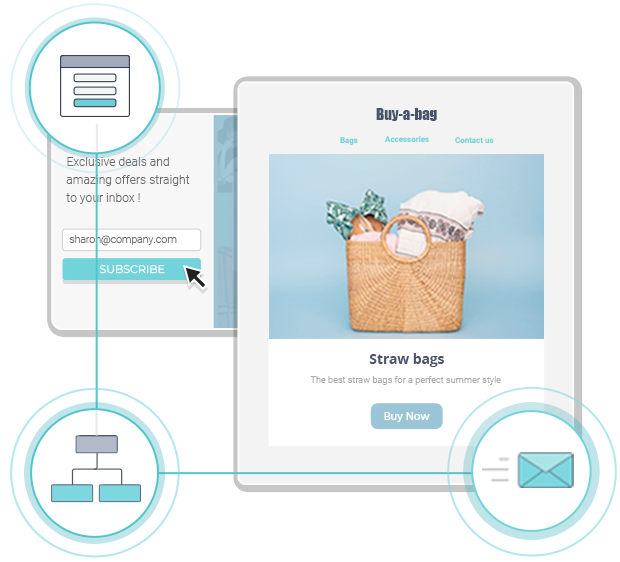
The easiest and most affordable email marketing and newsletter software!
What Is A Buyer Persona?
A buyer persona is a representation of your ideal customer that derives from extensive audience research and customer data. This persona is semi-fictional as it is not a real person, but it is based on real insights that come from your actual customers.
These personas help you guide your product development to better appeal to your audience’s needs, align work across your internal departments, and more importantly, focus on prospects that actually matter.
The characteristics of your personas come from customer research, market research, interviews, focus groups, customer service, demographics, psychographics, etc. And since there are different types of customers that are buying your products, you may need to create more than one persona.
Below you can see visually the different kinds of details your personas should include.
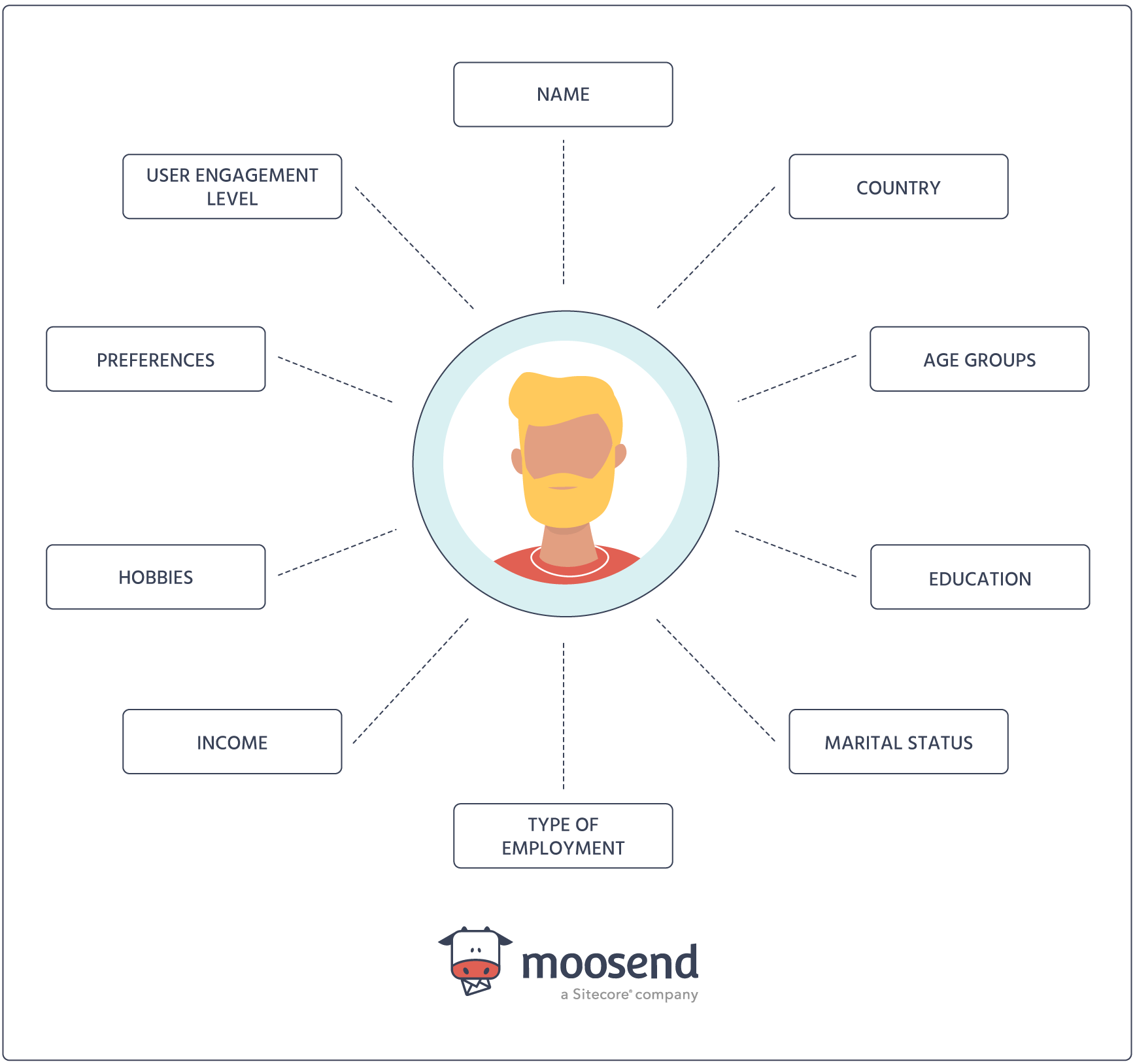
Now let’s see why creating personas is an important part of your overall digital marketing strategy.
Why Are Buyer Personas Vital For Your Business?
Buyer personas are very important for all businesses because they help you better understand your customers. Figuring out your existing customers as well as your potential customers enables you to adjust your content marketing strategy and create tailored content.
Moreover, you can make educated decisions about your product development and marketing messages. At the same time, buyer personas can help you address your customers’ pain points and their potential blockers.
In email marketing, which offers the greatest ROI among digital marketing channels, building buyer personas helps in doing proper customer segmentation and crafting high-converting marketing campaigns.
Buyer personas also come in handy when it comes to making decisions about your social media strategy. Creating organic posts that “speak” to your audience will help you build trust and establish a strong bond with your customer base.
What’s more, you’ll see benefits in your social advertising. There are plenty of detailed targeting options which can put your ad in front of the right people. So, knowing who the ideal people are for you is key.
Overall, buyer personas are absolutely essential if your brand is employing omnichannel marketing since they essentially streamline your sales process.
There is no “set” number of marketing personas you need to create, though. You could have one or two if you’re just starting out, or as many as 10 if you want detailed buyer personas.
And now, it’s time to see how you can create your own buyer personas for your business!
How To Create Buyer Personas [Step-by-Step]
The process of creating one or more different personas involves 4 steps. To succeed in creating useful buyer personas, you need to leverage data and input collected by both your audience base as well as your internal teams (e.g. sales team, marketing team, etc).
1. Conduct in-depth audience research
The first step in the process is to take a deep dive into who your existing customers are. To collect useful data about what types of people your customers are, you can use two strategies. First and foremost, real conversations with your customers are a good starting point. After that, you can look internally and take interviews with your internal team members.
In this way, you’ll be getting a full understanding of your customers’ behavior as well as their goals and potential challenges.
Customer Surveys and Interviews
Interviewing your customers and prospects is an ideal way to learn what they like about your product/service.
First, you’ll need to build trust with your interviewees, make it clear that it is not a sales call and make them feel comfortable sharing those insights with you.
Your main objective is to understand their customer behavior, so you can even ask questions that inform you about how they find and consume your content.
You can find key questions you should be asking your customers further down this blog post.
It is a good idea to include customers that are dissatisfied with your product. This way, you may find patterns that will help you build more solid buyer personas. For example, your unhappy customers may find your product too technical or difficult to use. This illustrates one of your customers’ challenges that might inform your product development.
Surveying your existing customers has the benefit that you may not need to provide an incentive (e.g. a discount coupon). Most customers are happy to be heard and they are eager to provide their feedback and possibly have an impact on the products/services they are using. So, it’s important to stress to them that you value their feedback. At the same time, this process increases brand loyalty.
At this point, you may be wondering how you decide how many people you need to interview. While there is no definitive answer, you should aim to interview at least 3 to 5 people for every person you create.
You’ll know that it’s time to stop at the point at which you’ll be able to “predict” what your interviewee is probably going to say. It also depends on how much data you already have from communication with your internal teams (e.g. your sales team).
Interviews with your Internal Teams
Facilitating interviews with your internal teams can help in gaining insights into your customers’ pain points, goals, and common behaviors before you build your final personas. Moreover, the overall goal will be to uncover what types of customers purchase your product.
Starting with your sales team, they interact with your customers on a daily basis. As a result, they can provide you with the best insights regarding the factors that influence a prospect’s decision to make a purchase or not. What’s more, they are the ones getting constant questions from your target audience so they’ll know the unique selling propositions (USPs) that make more sense to your customers.
Moving on to your marketing team, they will know your customers’ behavior through indirect interactions. How do people find you online? Which of your blog posts have the most traction? What marketing page on your website receives the most impressions?
All these questions help you better understand whom you need to reach and what the best way is to reach them is.
2. Find out customer goals and pain points
Discovering your customers’ goals and identifying their pain points will enable you to improve the buyer journey and deliver a better user experience.
While your sales team and customer support surely help find the answers to these questions, it is also key to employ social listening and social media sentiment analysis.
Through social listening tools, you can monitor mentions of your brand, products, as well as competitors. In essence, you get a real-time look into what people say about you online. You can learn why people love your products and what parts of your customer experience are failing and then incorporate these insights into your buyer personas.
You can go the extra mile and ask your customer service to collect real customer quotes. This will make your personas more in-depth.
3. Understand how you can benefit users
Once you’ve gained a good grasp of your customers’ goals and pain points, it’s time to establish how your products or services can help users. Here is how to approach this step.
Analyze the benefits your product/service has and how it makes your customers’ life easier. Most marketers have the misconception that features are the ones they should be focusing on. But features describe the product from the brand’s point of view, while the benefits define the practical conveniences the user will enjoy.
You need to ask yourself how you can assist your audience to overcome their main purchasing barriers.
A good way to nail this step is by conducting an online survey with your customers and loyal fans. They’ll be able to pinpoint the immediate benefits of your product and thus help you think how you can transform your messaging and create compelling campaigns.
4. Compile data and craft buyer personas
Now the time has come to gather the data you’ve collected and start looking for common characteristics. As soon as these characteristics start being grouped together, you’ll have the basis for your buyer personas.
For instance, let’s say you identify a core customer group of single women in their fifties that live in big cities and have an above-average income. You’ll have to turn this abstract sum of characteristics into a persona that you can interact with.
So, give your buyer persona a name, job title, age, and other defining traits, so that it seems like a real person. You could call her “Achiever Sally.”
Surely, this representation of characteristics won’t be true for ALL the buyers in your audience, but it helps you thinks about your future buyers in a “human” way and not intangible data. Also, each persona represents a segment of your audience so you can improve your marketing efforts.
Pro tip: It is always super helpful to utilize a buyer persona template as a foundation when creating your personas. You can find cool B2C and B2B buyer persona templates from HubSpot by clicking here.
28 Questions To Ask In Persona Interviews
This list contains some of the most important questions you should be asking to create detailed customer personas. The majority of these have a universal application. You can add or remove questions that you feel might be more appropriate for your target customers.
1. Personal Background Questions (Demographics)
- How old are you?
- What is your gender?
- What’s your marital status?
- Do you have any children?
- What is your level of education?
- What did you study?
- How did you end up where you are today?
2. Career Profile Questions
- What is your job role and job title?
- What skills are required to do your job?
- How long have you been in the current position?
- How is your job measured?
- What tools are you using in your job?
- Who do you report to? Who reports to you?
- Which industry does your company belong to?
- What is the size of your company?
- What is the revenue of your company?
- What does a typical day look like?
- What social networks are you using (e.g. Facebook, LinkedIn)?
- What blogs do you read?
- What are your spending habits?
3. Goals and Challenges Questions
- What are your business goals?
- How is success defined in your role?
- What is your biggest challenge(s)?
- What is your biggest problem when using our product?
- What is the worst customer service experience you have ever had?
4. Preference Questions
- How do you prefer to interact with vendors (email, phone, in-person)?
- Do you use the internet to research vendors/products?
- How did you decide to purchase that product/service (latest purchase)?
Conclusion
Buyer personas are a powerful tool for both big and small businesses to maximize their marketing efforts and create effective customer journeys. They help you reach your target market more effectively, improve conversions and increase customer loyalty.
While many brands still fail to recognize their importance, buyer personas can be among the key factors assisting you to win over your competitors.
Frequently Asked Questions (FAQ)
Here are the most frequently asked questions we’ve collected regarding buyer personas.
1. Are B2B buyer personas different from B2C?
B2C and B2B buyer personas are not all that different. B2C buyer personas map out demographic information, preferences, emotions, and the goals of the ideal customer. B2B personas, on the other hand, tend to focus more on the size of the business, the people making the purchasing decisions (decision makers) and the benefits sought.
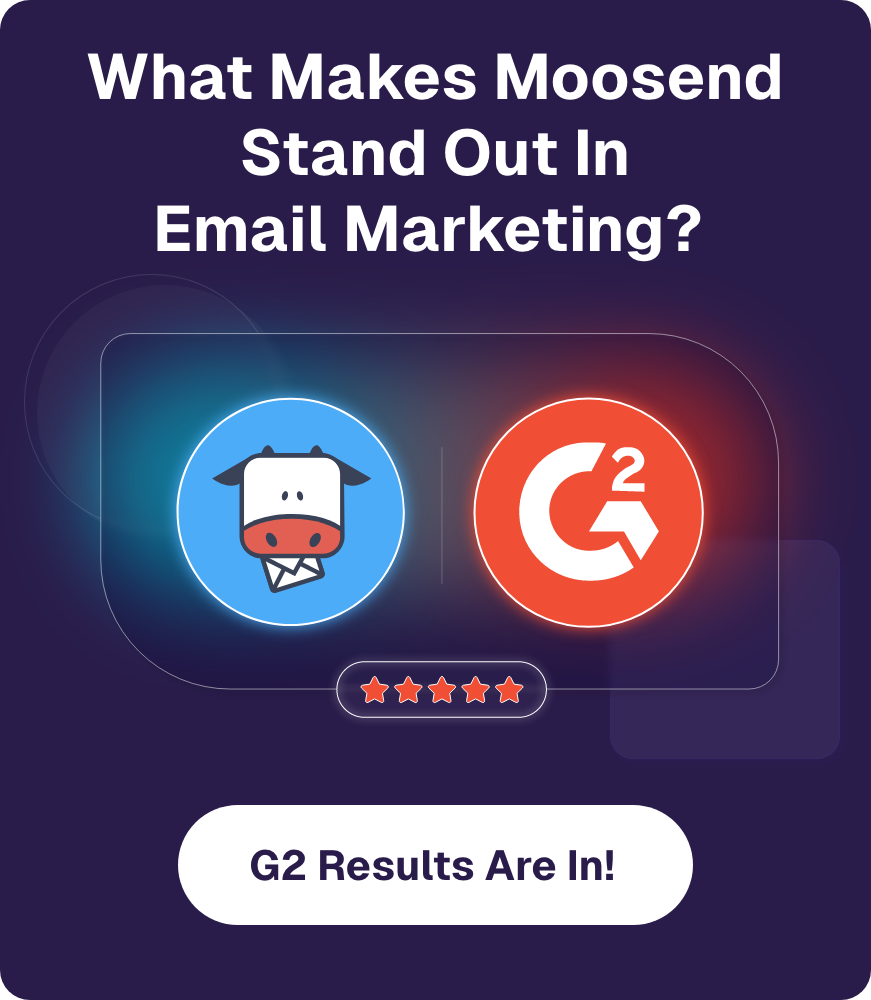


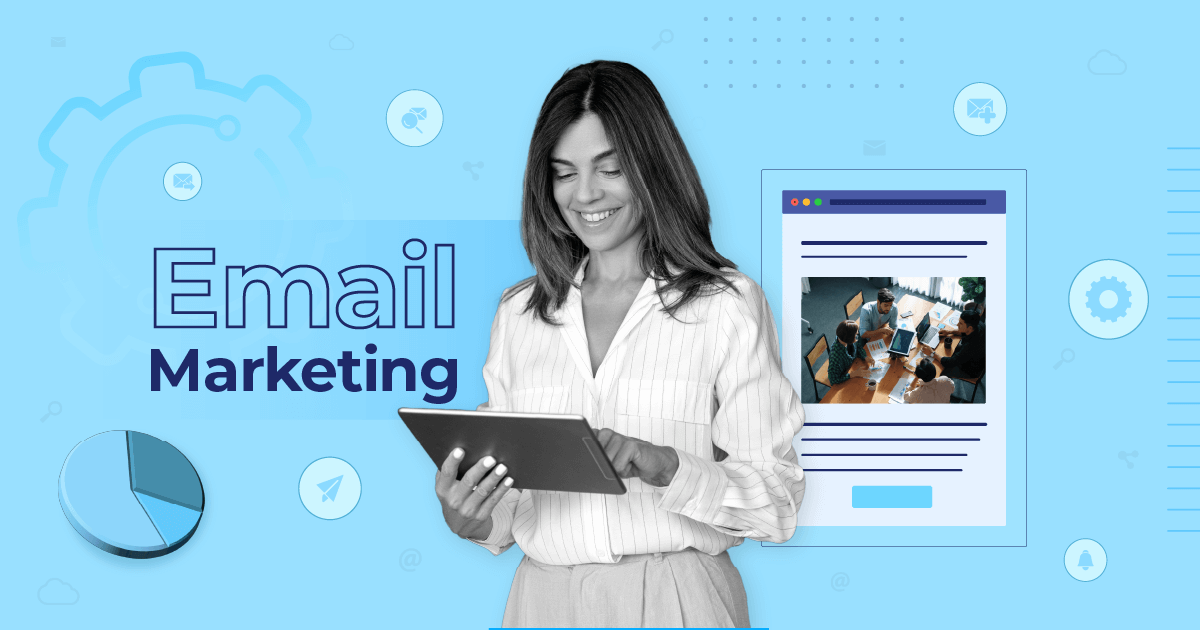
 Published by
Published by
